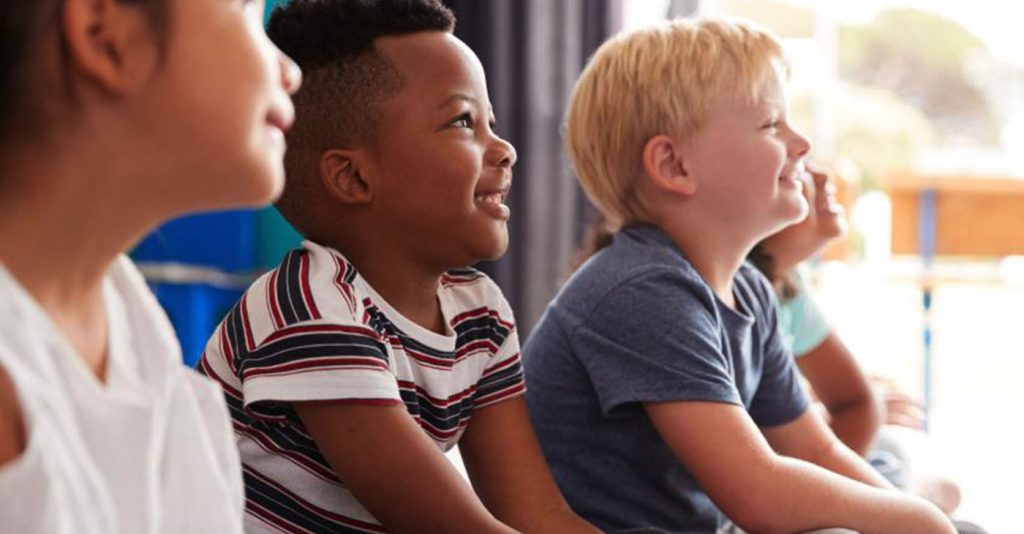By Khari M. Garvin
Head Start Director
U.S. Department of
Health and Human Services
Did you know that Head Start programs are more than just preschool? The program can be a lifeline for children ages birth to five and their families, helping them thrive through education, health, and community support. It is also a place built on the strengths of children, families, staff, and communities. Head Start programs support children’s growth from birth to age 5 through services centered around early learning and development, health, and family well-being. Head Start staff actively engage parents, recognizing family participation throughout the program as key to strong child outcomes.
Head Start services are available at no cost to children ages birth to 5 in eligible families. Head Start preschool services work with children ages 3 to 5 and their families. Early Head Start services work with families that have children ages birth to 3, and many also serve expectant families. Many programs operate both Head Start preschool and Early Head Start services. Head Start and Early Head Start grant recipients provide services in every U.S. state and territory, farm worker camps, and more than 155 tribal communities. It’s important to understand how our programs go above and beyond early learning to ensure every child and family is included, respected, and empowered.
What Does “Belonging” Look Like?
Inclusion and belonging aren’t just buzzwords — they’re the foundation of everything the Head Start program does. Staff are committed to creating spaces where everyone, regardless of their background, can succeed — whether it’s recognizing each child’s unique abilities and ideas, valuing parents as experts on their own children and as program volunteers and leaders, or linking families with needed services. Take, for example, how programs recruit and enroll families.
Instead of using a one-size-fits-all approach, programs tailor their outreach to meet the unique needs of each community. This might mean offering materials in multiple languages to ensure accessibility for all, building upon civil rights laws requiring translation when necessary to facilitate understanding and participation. Programs are proactive in supporting families with disabilities, ensuring they have the necessary aids and services they need to participate in the program. The goal is to open doors and provide support for children and families furthest from opportunity and offer them a place to belong.

A Classroom That Reflects Every Child’s World
Head Start classrooms aren’t just places where children learn their ABCs — they are vibrant spaces where each child’s culture, language, and identity are celebrated. Teachers take the time to get to know each child’s strengths, interests, and challenges, crafting learning experiences that resonate with them personally.
In fact, Head Start staff are trained to recognize and address implicit biases, so no child is unfairly limited by preconceived notions about their background. Through updated resources like the Multicultural Principles for Early Childhood Leaders, program staff are equipped to create environments where diversity is not only acknowledged but embraced.
For children with disabilities, Head Start programs provide tailored support like visual aids and personalized learning tools that help them thrive alongside their peers. They ensure children get the aid and services they are entitled to under disability rights laws. Staff make sure no one is left out by ensuring every child can fully participate, whether they have a formal diagnosis. Research has shown that inclusive classrooms lead to better outcomes for all!
Health Equity Is a Critical Part of Belonging
Health is a key part of a child’s ability to learn and grow. Head Start programs make health services a central part of children’s experiences. But here’s the thing: not everyone has equal access to health care. That’s why Head Start programs work hard to eliminate the barriers some families face. These barriers may include a lack of health insurance, language barriers, or limited access to doctors.
Head Start health staff partner with families to help them navigate these challenges, ensuring every child starts school healthily and ready to learn. Through nutrition programs, mental health services, preventive and follow-up care, and more, each Head Start program works to close health services gaps and promote equitable outcomes for children.
Partnering with Families for Lasting Change
In Head Start programs, family is everything. Fundamental to the program is the belief that children thrive when families are fully engaged. That’s why the Head Start approach to family engagement goes beyond parent-teacher conferences. It’s about building genuine, respectful partnerships with families from all walks of life.
In every interaction, Head Start staff are trained to meet families where they are — culturally, linguistically, and personally. Whether they are helping families experiencing homelessness acquire stable housing or supporting families facing economic challenges, Head Start programs ensure everyone has a seat at the table.
Through resources like the Family Economic Mobility Toolkit , programs help families build financial stability and create brighter futures for their children. By addressing not only the child’s needs but also the family’s, the Head Start program creates lasting, positive change for generations.
A Future Where Everyone Belongs
The Head Start mission has always been to break the cycle of generational poverty — providing children and families with a head start in life. The Head Start program is about so much more than academics. It’s about creating a world where every child — regardless of background, ability, or circumstance — feels confident and competent and knows they belong. These children will persist as they continue to grow and learn even after they leave their Head Start programs.
Let’s celebrate every program’s commitment to serving the children and families furthest from opportunity and helping them thrive.




